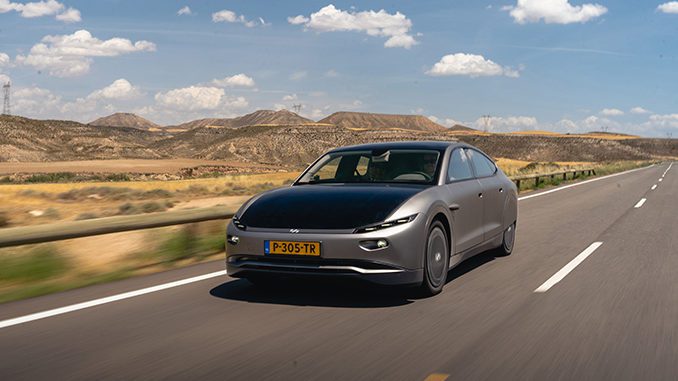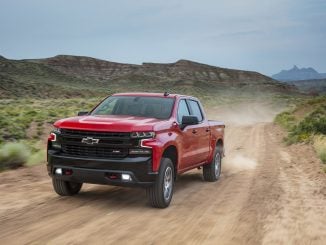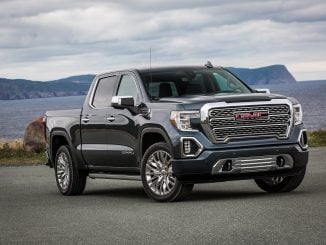
BILBAO, Spain — I’ve driven a lot of electric cars, but the Lightyear 0 is something new.
It’s not just that it’s electric, and it’s not just that there are 54 square feet of solar panels on the roof. It’s also an entirely new way of thinking about EVs, getting back to basics and focusing on efficiency rather than simply stuffing more batteries into a car to get better range.
The Lightyear 0 is an R&D project put on sale by a Dutch company born out of a college project. The car is a €250,000 proof of concept designed to show that putting solar panels on a car is more than a publicity stunt.
To be sure, the solar panels don’t make a ton of power — in ideal conditions, it could theoretically generate about 1 kW of power, but in the real world, it’s a fair bit less. But that makes less of a difference than you’d think.
The Lightyear 0 is designed from the ground up to be as efficient as possible. It’s by far the most aerodynamic production car ever, with just a 0.175 drag coefficient. The Mercedes-Benz EQS, the most aerodynamic vehicle available for sale, scores 0.20. The best Tesla? That gets 0.23. These numbers might not mean much, but having a 0.01 improvement over the competition is significant, never mind a 0.025 over the slipperiest car you can get.
Drag is one of the biggest challenges for electric car range, and the faster you go, the more of an issue it is. Let up on the throttle at 70 mph, and it’s not engine braking that slows you down — it’s the wind. A car driving along the highway is doing its best to bash the air into submission, which is why the faster you go, the worse your fuel economy is.
But when you let your foot off the throttle in the Lightyear 0… nothing happens. It gradually begins to slow, but you can’t even feel it. It’s like when a plane throttles back to start its descent for landing. A passenger might be vaguely aware that you’re not going quite as fast as before, but if you aren’t paying attention, it’s easy not to notice.
The Lightyear 0 has an elongated teardrop shape ideal for reduced drag, and as a bonus, it gives lots of room for solar panels everywhere. That makes it a little weird to be in the cockpit since there’s no rear glass. Instead, a rear-facing camera sends a view from the back to your rear view “mirror.” The same happens on the sides, with small camera bumps protruding because full-size wing mirrors are terrible on drag.
The four motors are located in the wheels themselves, reducing complexity and parasitic losses on the drivetrain. And, instead of being optimized for maximum torque and lightning-fast 0-60 mph sprints, the Lightyear 0 takes a leisurely 10 seconds to get there. But once it does, the car uses a mere 170 Wh per mile of energy at 68 mph.
With a 60 kWh battery, the Lightyear 0 can go an astonishing 350 miles at 68 miles per hour. This is far, far better than anything else on the market. A Tesla Model 3 Performance burns 282 Wh/mile at around the same speed, almost 60 percent more.
It sounds perfect, but there are a few downsides. For one, it costs a quarter-million dollars, and it’s only available in Europe. Second, the version I drove was a prototype with more than a few rough edges, especially around the interior fitments and the infotainment and dash cluster displays.
Lightyear is also a small Dutch startup. However, the tech is real, they’ve partnered with Swedish supercar powerhouse Koenigsegg, and recently raised €81 million to continue development of the Lightyear 2, a mass-market car that should be much more affordable.
And let me return to the solar panels for a minute since that’s the whole point of this car. It’s not meant to be a car that you never plug in. Instead, the solar panels are intended to augment your charging at home or work. If you park the car out in the sun all day, you’ll be able to cover some or all of your commute in free electricity courtesy of the sun.
It’s also gleefully fun to drive down the road watching the live readout of how much energy you’re generating from the sun, and we even saw a special development-only mode that allowed the car to crawl along at a walking pace, using only what was being generated at that moment.
The Lightyear 0 isn’t going to be a mass-market hit, and it’s not meant to be. But the dedicated Dutch team behind it wants to show the auto industry that solar panels can be useful on an automobile and that we don’t need to go bigger and heavier — ahem, GMC Hummer EV — with new electric cars.
Something is appealing about getting back to basics and simply building an efficient car. I’m hoping the Lightyear 2 can become a reality and make it to the US.
But in many ways, the Lightyear 0 is enough. Solar panels can be useful, generating enough electricity for a few dozen miles of range every day, thanks to its remarkable efficiency.
Now we just have to wait and see if Lightyear makes the dent in the universe that they’re hoping to.



